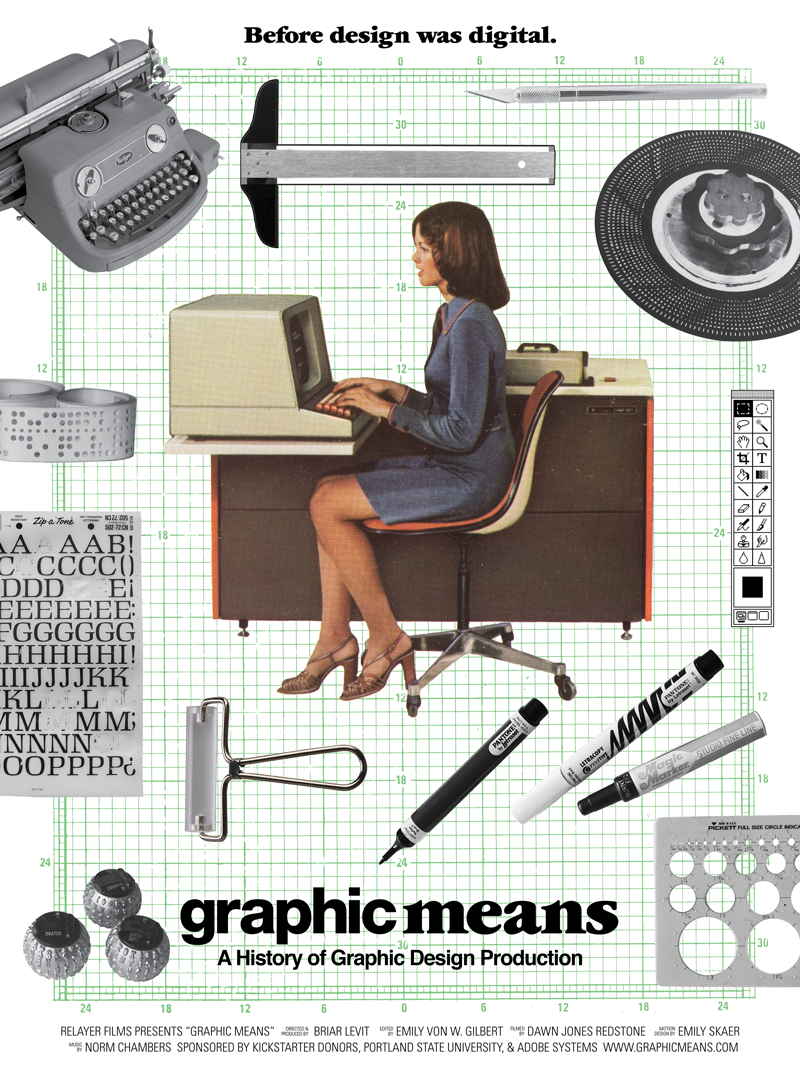Graphic Means & The Transition to Desktop Publishing
If you enjoyed following along through design history as we celebrated Adobe Illustrator’s 30th birthday (posts here and here), you’ll likely dig the upcoming Graphic Means documentary. You may have heard the buzz about it over the last couple of years. The film is now ready and Typekit will be sponsoring a series of upcoming private screenings and panels in Seattle, San Francisco, San Jose and New York. We’re also hosting a pre-screening cocktail reception before the public world premiere on April 15th in Seattle. If you’re in town we hope to see you there or you can catch one of several upcoming showings around the world.

The documentary, Graphic Means, explores graphic design production of the 1950s through the 1990s—from linecaster to photocomposition, and from paste-up to PDF.
To wrap up Adobe’s look back at Illustrator, we briefly chatted with the film’s director Briar Levit about the role the program had in the evolution of typography in graphic design.
In your research for the film, what did you find your subjects had to say about Illustrator?
People I interviewed for Graphic Means were pretty focused on the differences between working by hand, and working with digital tools. Lettering designer, Gerard Huerta, who works in Illustrator the most of any of my interview subjects, had a hard time switching over at first, mostly because he found he was having to correct the work of folks who had switched over to the computer, with his superior hand rendering skills in the early days. But things changed when he realized one of his heroes was making really good use of the computer (Illustrator):
“…a teacher from Art Center, Doyald Young, a wonderful man who did beautiful lettering and taught at Art Center for 30 years came here to the studio and he brought with him a drawing that he had done, a printout of a job he was doing for Prince, the musician that recently passed away. It was this very decorative, beautiful, illustrative piece of lettering. The moment I saw it, I knew I would have to change over, because here was a man who was working on the computer and knew how to do it. I brought my Mac in here and I just started trying to teach myself.”
What do you think the main impacts Illustrator had on typography in particular?
Illustrator has allowed designers to make experiments at a speed that encourages many more variations (compared with doing lettering by hand). This is huge, as we are now able to take a design or piece of lettering much further and wider before deciding on a final direction.
What are your personal recollections about Adobe Illustrator?
I don’t have any anecdotes, really. But I can say that as a design student I remember just being blown away at the idea that I could draw something in illustrator and scale it infinitely, and not lose any resolution quality.
2 Responses
Comments are closed.
I believe Mr Huerta Is referring to the late Doyald Young, the reknowned type designer, lettering master and teacher.
I got to know illustrator 88 back when the program was starting and learning how to use it in my commercial art class at city college, since then the class changed to graphic design. I became very good it. I hated Spec typeing.